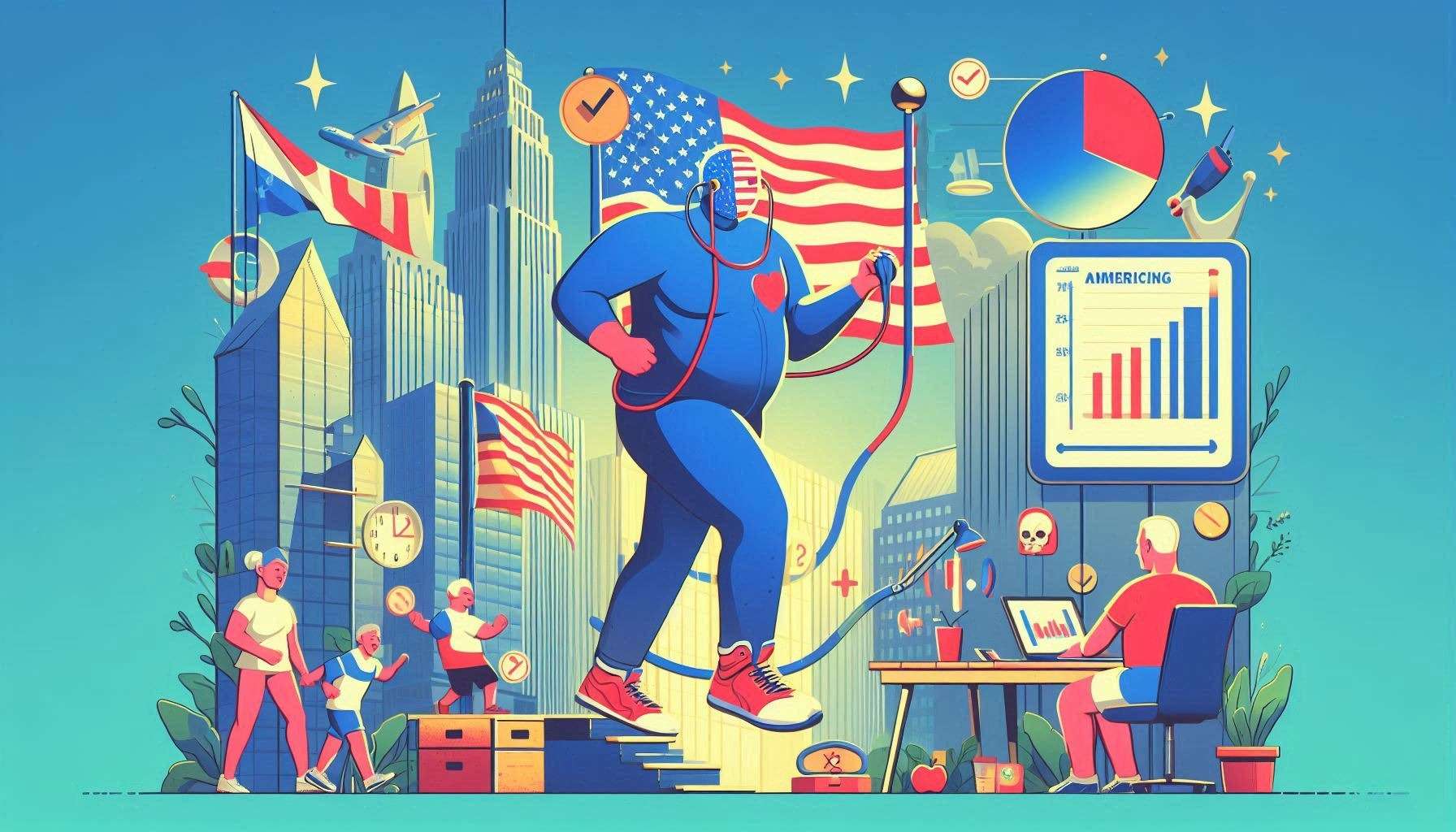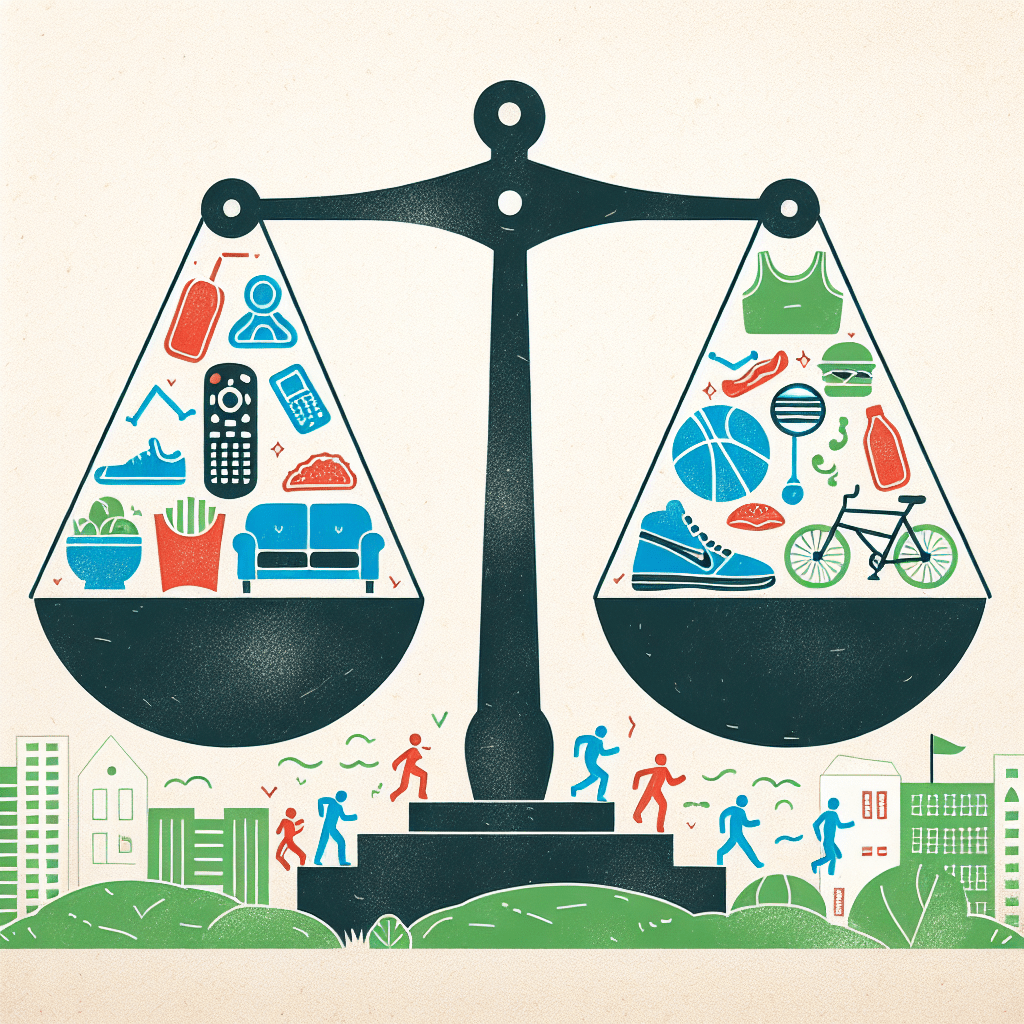-
Table of Contents
Why do less active Americans not increase their Activity Levels?
Physical inactivity is a growing concern in the United States, with a significant portion of the population failing to meet recommended activity levels. Despite the numerous benefits of regular exercise, many Americans continue to lead sedentary lifestyles. This article explores the reasons behind why less active Americans do not increase their activity levels, examining various factors such as lack of time, motivation, accessibility, and societal influences.
Lack of Time
One of the primary reasons why less active Americans struggle to increase their activity levels is a perceived lack of time. In today’s fast-paced society, individuals often find themselves juggling multiple responsibilities, leaving little room for exercise. Long working hours, family commitments, and other obligations can make it challenging to prioritize physical activity.
According to a study conducted by the Centers for Disease Control and Prevention (CDC), lack of time was cited as the most common barrier to physical activity among adults. The study found that individuals who reported having less leisure time were less likely to engage in regular exercise. This highlights the need for strategies that can help individuals incorporate physical activity into their busy schedules.
Lack of Motivation
Another significant factor contributing to the low activity levels among less active Americans is a lack of motivation. Many individuals struggle to find the drive to engage in regular exercise, often due to a lack of enjoyment or perceived benefits. The absence of immediate rewards can make it difficult to sustain long-term exercise habits.
Research has shown that intrinsic motivation, such as finding personal satisfaction or enjoyment in physical activity, is crucial for maintaining regular exercise habits. However, extrinsic motivators, such as weight loss or societal pressure, may not be as effective in promoting long-term adherence to exercise routines. Therefore, it is essential to find activities that individuals genuinely enjoy and find meaningful to increase their motivation to be physically active.
Lack of Accessibility
Accessibility to exercise facilities and resources is another significant barrier preventing less active Americans from increasing their activity levels. Many individuals, particularly those living in low-income areas or rural communities, may not have easy access to gyms, parks, or recreational facilities. Limited access to safe and affordable exercise options can significantly hinder individuals’ ability to engage in regular physical activity.
A study published in the American Journal of Preventive Medicine found that individuals living in neighborhoods with fewer recreational facilities were less likely to engage in physical activity. This highlights the importance of improving access to exercise resources in underserved communities to promote active lifestyles.
Societal Influences
Societal influences play a significant role in shaping individuals’ activity levels. The prevalence of sedentary behaviors, such as excessive screen time and desk-bound jobs, has become the norm in many American communities. This cultural shift towards a more sedentary lifestyle can make it challenging for individuals to break free from these habits and adopt more active behaviors.
Furthermore, societal norms and expectations can also influence individuals’ perceptions of physical activity. For example, a study published in the Journal of Health Psychology found that individuals who perceived exercise as a masculine activity were less likely to engage in regular physical activity. Overcoming these societal barriers requires a shift in cultural attitudes towards physical activity and the promotion of inclusive and diverse exercise environments.
Conclusion
Increasing activity levels among less active Americans is a complex issue influenced by various factors. Lack of time, motivation, accessibility, and societal influences all contribute to the challenge of adopting a more active lifestyle. To address this issue, it is crucial to implement strategies that prioritize physical activity, such as creating opportunities for exercise during busy schedules, promoting intrinsic motivation, improving access to exercise facilities, and challenging societal norms surrounding physical activity.
By addressing these barriers and creating a supportive environment, we can empower less active Americans to increase their activity levels and reap the numerous physical, mental, and social benefits of regular exercise.
People Also Ask:
1. What are the main reasons inactive Americans don’t exercise more?
✅ Common barriers include:
-
Lack of time (work/family obligations) (CDC)
-
Low motivation or enjoyment (American Psychological Association)
-
Limited access to safe spaces (parks, sidewalks, gyms) (NIH)
-
Chronic pain or health conditions (Mayo Clinic)
📌 Source: CDC – Physical Activity Barriers
2. Does socioeconomic status affect physical inactivity?
✅ Yes. Lower-income Americans face:
-
Fewer recreational facilities in their neighborhoods (Brookings Institution)
-
Higher costs of gyms, equipment, or sports programs (Journal of Urban Health)
-
Less leisure time due to multiple jobs (Economic Policy Institute)
📌 Source: Brookings – Inequality & Exercise Gaps
3. How does mental health impact activity levels?
✅ Depression/anxiety reduce energy and motivation (Harvard Medical School). Inactive adults are 50% more likely to report mental health struggles (NIH).
📌 Source: Harvard – Mental Health & Exercise
4. Why do people quit exercise programs?
✅ Top reasons:
-
Unrealistic goals (too intense, too fast) (ACE Fitness)
-
Boredom (repetitive workouts) (Psychology Today)
-
Lack of social support (Journal of Behavioral Medicine)
📌 Source: ACE Fitness – Exercise Adherence
5. Can technology help sedentary Americans become more active?
✅ Yes! Fitness apps, wearables, and gamification boost motivation:
-
30% of Fitbit users increased daily steps (Journal of Medical Internet Research)
-
Apps like Strava provide community accountability (Forbes)
📌 Source: JMIR – Wearables & Activity
People Also Read
- 2030 A Doomsday According to Indian Texts or Misinterpretation?
- The Glory of Narasimha Bhagwan: An Exploration of Ancient Indian History
- Medusa and Mansa Devi: The Untold Myths Connecting Greek and Hindu Traditions
- “The Enigmatic Link Between the Bermuda Triangle and Hindu Mythology of Ramayan: Unveiling the Mystery”
- why is mt. Kailash Considered to be a Sacred Site?
- How Eastern Wisdom Can Transform Your Modern Life.
- Lord Shani and Lord Yam : God of Karma for Living and Death
- In which direction Ganesh Idol should face.
- What is the logic for existence of God?
- Who Is Mahadev Shiv ?
- How to increase love for Krishna?
- Hanuman Chalisa English Lyrics| Bhajle Ram Naam | Prashyant Jha
Free AI Tools To test yourself
- Love Percentage Checker Tool – Check For Free!
- Soulmates Initial Finder
- Hz Frequency Generator- Free Online Tone Generator
- Mental Health Check In Tool [ FREE TEST ]
- Best Free Phone Photos Download
- Image Converter (Online & Free)
Seotoolrank.com Free Ai Tools
- RankVortex – Implies pulling traffic and SEO rankings toward you.
- free image converter
- ConvertEase PDF
- Rich Snippet Previewer & Schema Validator
- URL Encoder/Decoder
- Social Media Post Formatter
- Website Speed Checker Tool
- SEO Word Counter with Character Count
- Free Stopwatch and Online Timer Countdown
- Age Calculator Tool
- Password Generator Tool
- Qr Code Generator Free
- AI Story Generator Tool
- Blog Title Generator Tool [FREE]





